Over recent years there have been many natural disasters that have impacted museums and other historic sites (i.e. flood at the Louvre in 2017, fires at the National Museum of Brazil (2018) and Notre Dame Cathedral in 2019). While most natural disasters result in extensive damage to artifacts, they may also reveal something new or exciting that would otherwise remain unknown.
In February, 2019, staff from Museum Textile Services surveyed several costumes and costume ensembles at the Maine State Museum that were impacted by ice and water damage to secure storage facility. Later that same year, 17 costume ensembles initially surveyed arrived at MTS for conservation treatment. One costume ensemble in particular, consisting of a polka-dot bodice and skirt with lace panels, was particularly fragile and required an interventive treatment.
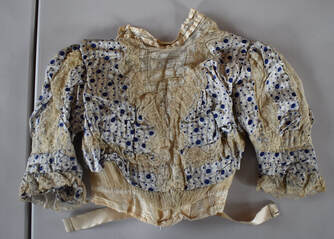
Front of Bodice before conservation. Image by MTS.
Courtesy of Maine State Museum.
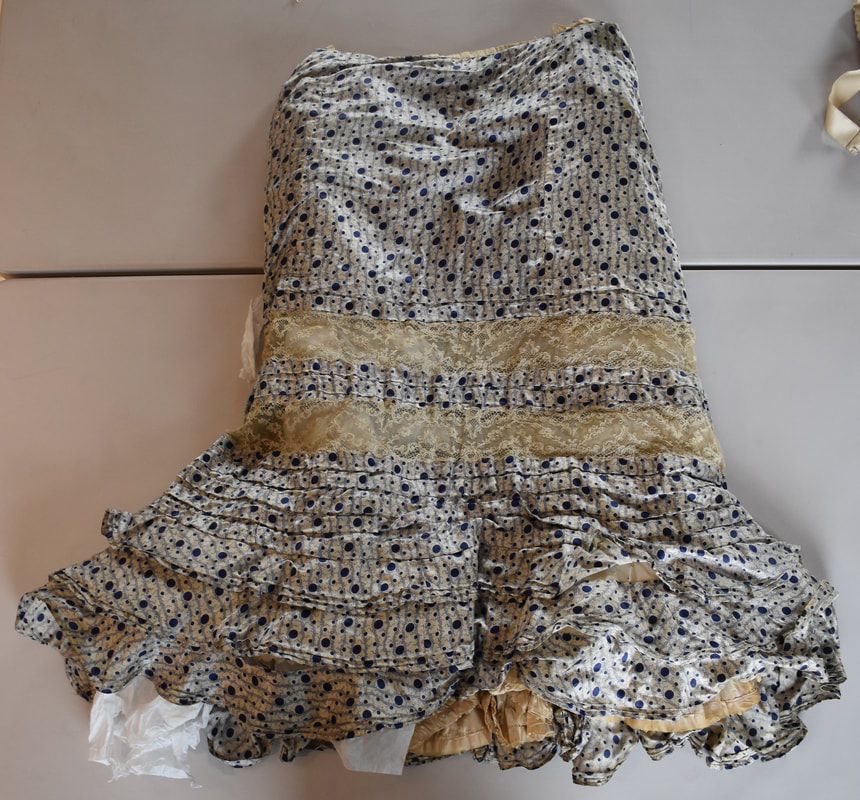
Front of Skirt before conservation. Image by MTS.
Courtesy of Maine State Museum.
Condition
The two-piece dress, comprised of a bodice and skirt made of white silk with blue polka dots, was stiff and discolored from water exposure from the flood. The plain white silk used in the lining of the bodice, as well as the float-linings of the skirt and skirt tiers, already had numerous tears and splits, which is an inherent vice of silk. Underarm shields in each sleeve of the bodice were also shedding powder, likely from deteriorated polyurethane pads.
Treatment
To address the flood damage, it was decided to wetclean the bodice and skirt. Prior to wetcleaning, the degraded skirt lining was removed due to its fragility. The decision was made not to conserve the linings due to the potential to cause additional damage through handling and loss of historic information. The underarm shields were also removed and archived due to their instability, bulkiness, and increased weight when wet, which could damage the fragile silk in surrounding areas. Fragile areas on the bodice were temporarily encased in nylon net for ease of handling during wetcleaning.
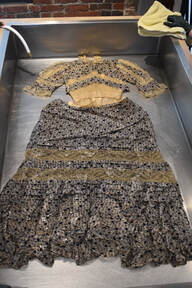
Bodice and Skirt in wash bath.
The bodice and skirt were washed in a bath of deionized water with a conservation-grade anionic surfactant. The wetcleaning was successful in reducing the staining and tidelines from the flood. However, the silk lining of the skirt tiers, which had been left in place, further deteriorated during washing. As a result, the linings of the tiers were removed and archived with the other salvaged lining. Silk habotai was later used to create new float-linings, which were hand stitched into the skirt.
The silk lining of the bodice was humidified to remove creases and flatten the many silk fragments. The corset band was temporarily removed to facilitate access. The lining was overlaid with panels of nylon net and stitched around the numerous loose silk fragments. The bottom of the bodice got a new underlay of silk habotai to visually infill areas of loss. Small tears in the silk crepe panels on the bodice were stabilized with nylon net patches where needed. Following stitched repairs, the corset band was reattached.
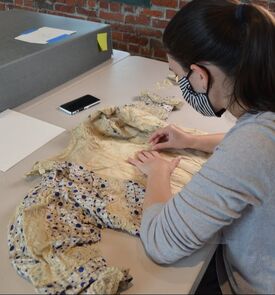
Kayla stitching around the silk fragments to stabilize the lining.
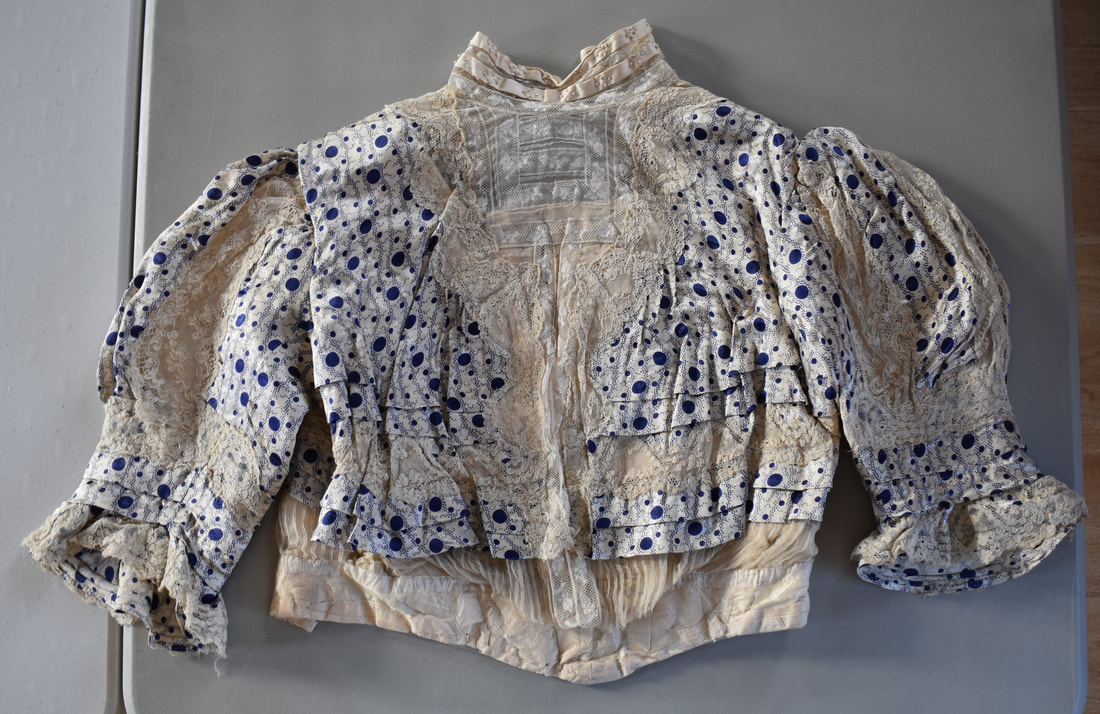
Front of Bodice after conservation.
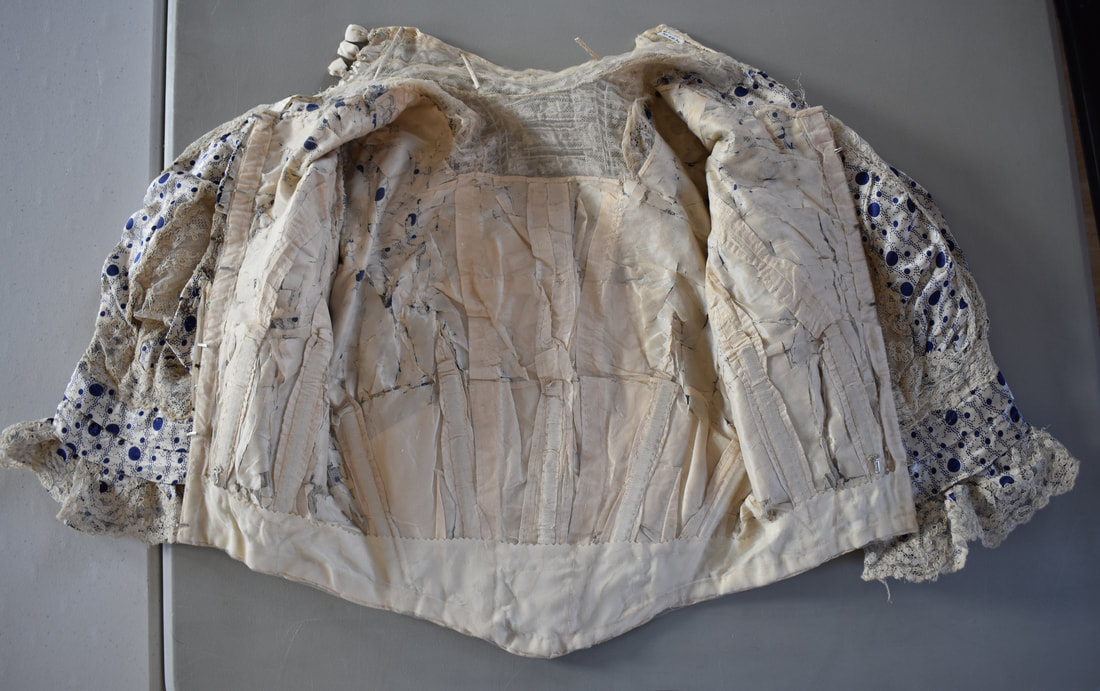
Interior of Bodice after conservation.
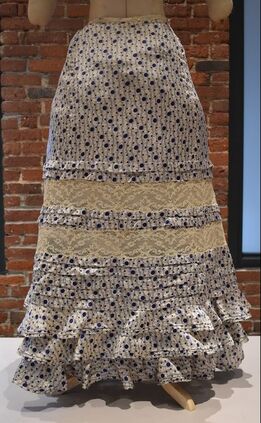
Front of Skirt after conservation.
The flood at the Maine State Museum initiated the subsequent survey and treatment of many historic costumes. Perhaps without that unfortunate event, this delightful ensemble would have remained untreated and unexhibitable due to its fragile condition. Today, the polka-dot dress is free of distortions and deterioration products caused by the flood, and is stable enough that it can be displayed. A special thank you goes out to the excellent staff of the Maine State Museum who helped us manage this project, which kept us going through the early months of the 2020 Covid-19 pandemic.

